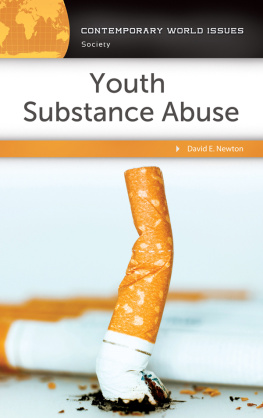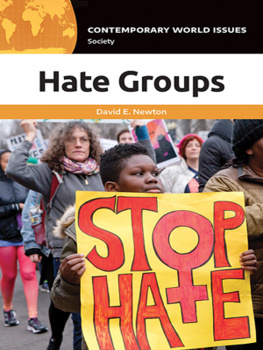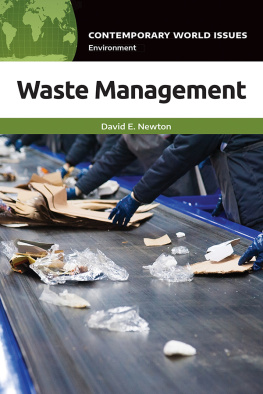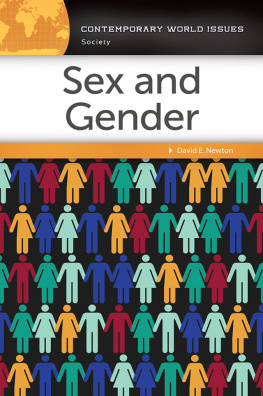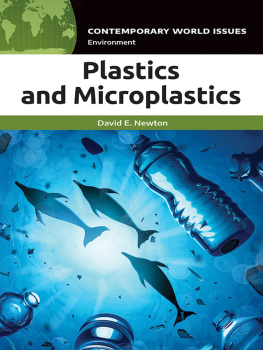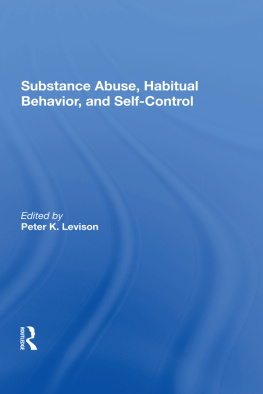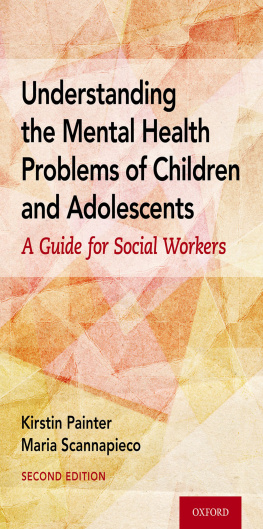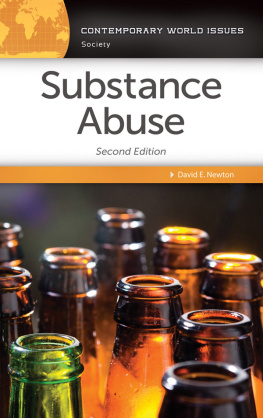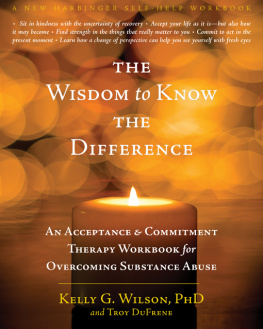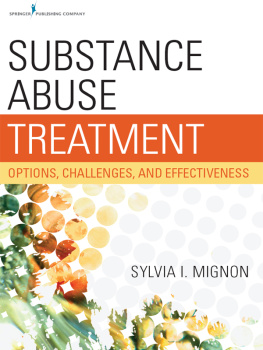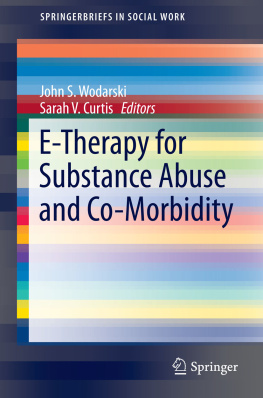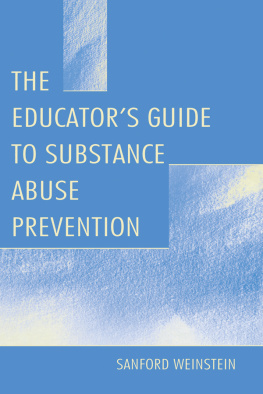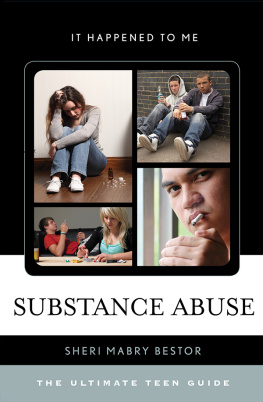Youth Substance Abuse
Recent Titles in the
CONTEMPORARY WORLD ISSUES
Series
Wind Energy: A Reference Handbook
David E. Newton
Profiling and Criminal Justice in America: A Reference Handbook, second edition
Jeff Bumgarner
Fracking: A Reference Handbook
David E. Newton
Cyber Warfare: A Reference Handbook
Paul J. Springer
Healthcare Reform in America: A Reference Handbook, second edition
Jennie Jacobs Kronenfeld and Michael Kronenfeld
Cloning: A Reference Handbook
David E. Newton
Hate Crimes: A Reference Handbook, third edition
Donald Altschiller
Illegal Immigration: A Reference Handbook, second edition
Michael C. LeMay
Obesity: A Reference Handbook, second edition
Judith S. Stern and Alexandra Kazaks
Solar Energy: A Reference Handbook
David E. Newton
Prescription Drug Abuse: A Reference Handbook
David E. Newton
The Minimum Wage: A Reference Handbook
Oren M. Levin-Waldman
Juvenile Justice: A Reference Handbook, second edition
Donald J. Shoemaker and Timothy W. Wolfe
The Global Water Crisis: A Reference Handbook
David E. Newton
Books in the Contemporary World Issues series address vital issues in todays society such as genetic engineering, pollution, and biodiversity. Written by professional writers, scholars, and nonacademic experts, these books are authoritative, clearly written, up-to-date, and objective. They provide a good starting point for research by high school and college students, scholars, and general readers as well as by legislators, businesspeople, activists, and others.
Each book, carefully organized and easy to use, contains an overview of the subject, a detailed chronology, biographical sketches, facts and data and/or documents and other primary source material, a forum of authoritative perspective essays, annotated lists of print and nonprint resources, and an index.
Readers of books in the Contemporary World Issues series will find the information they need in order to have a better understanding of the social, political, environmental, and economic issues facing the world today.
CONTEMPORARY WORLD ISSUES
Youth Substance Abuse
A REFERENCE HANDBOOK
David E. Newton

Copyright 2016 by ABC-CLIO, LLC
All rights reserved. No part of this publication may be reproduced, stored in a retrieval system, or transmitted, in any form or by any means, electronic, mechanical, photocopying, recording, or otherwise, except for the inclusion of brief quotations in a review, without prior permission in writing from the publisher.
Library of Congress Cataloging-in-Publication Data
Names: Newton, David E., author.
Title: Youth substance abuse : a reference handbook / David E. Newton.
Description: Santa Barbara, California : ABC-CLIO, [2016] | Series: Contemporary world issues | Includes bibliographical references and index.
Identifiers: LCCN 2016012284 | ISBN 9781440839825 (alk. paper) | ISBN 9781440839832 (ebook)
Subjects: LCSH: YouthSubstance use. | Substance abuse.
Classification: LCC HV4999.Y68 N49 2016 | DDC 362.290835dc23
LC record available at https://lccn.loc.gov/2016012284
ISBN: 978-1-4408-3982-5
EISBN: 978-1-4408-3983-2
201918171612345
This book is also available as an eBook.
ABC-CLIO
An Imprint of ABC-CLIO, LLC
ABC-CLIO, LLC
130 Cremona Drive, P.O. Box 1911
Santa Barbara, California 93116-1911
www.abc-clio.com
This book is printed on acid-free paper 
Manufactured in the United States of America
Contents
In January 2016, The New York Times printed a remarkable article about death rates among non-Hispanic white American males between 1990 and 2014. The article noted that the demographic group had experienced a pattern of mortality very different from that of other demographic groups in the country, such as non-Hispanic white women, blacks, and Hispanics. The bottom line was that the mortality rate for non-Hispanic white males was increasing, while that of all other groups in the United States was dropping. These results have been startling because modern scientific advances have improved the health outlook for almost everyone in both developed and developing nations. How does one explain the dramatic reversal of this pattern for white American males?
As it turns out, the answer is fairly simple: drug abuse. The number of white males between the ages of 25 and 34 who overdosed from drugs in 2014 was five times the rate of those who did so in 1999, and the number who did so in the 35 to 44 year age group tripled during that period. This one factordrug abusewas responsible for a change in death rates that had not been seen in the United States since the Vietnam War decade of the late 1960s and early 1970s. With data like these, can anyone any longer doubt the severity of the adolescent substance abuse problem in the United States and, as it turns out, in many other parts of the world?
The demographics of substance abuse among adolescents have traveled an irregular path over the past half century. The Monitoring the Future study, which has been tracking drug use among high school seniors since 1975, has found that the consumption of illegal substances began at a fairly high level in the earliest years of its research (about 50 percent of boys and 40 percent of girls admitted to using illegal drugs at least once during the year preceding the study), increased to its highest peak ever about five years later, dropped to its lowest levels ever in the early 1990s, and finally rose to its current levels of 40 percent use for boys and 30 percent use for girls. Experts have expressed some hope that the decreases in drug use seen in the past half decade may represent a new trend in decreasing drug use and abuse, although no one is especially confident that such is the case.
Teenagers around the world today are faced with a staggering variety of legal and illegal psychoactive substances that can bring them feelings of excitement, joy, euphoria, a sense and calm and relief, or trips into worlds far removed from reality. For a certain portion of the adolescent population in every nation of the world, such escapes from reality may be the only apparent answer to the drabness or anxieties of their everyday lives. And for an even large numbers of teenagers, the use of psychoactive materials may simply be one more new experience in which they want to participate.
Yet, scientific evidence and demographic reports have now shown beyond a doubt that turning to drugs for a change in mood is not a simple break from the humdrum of everyday life. Such experiences have identifiable and measurable changes on the human brain that may last long after drug use has discontinued. They often lead to dependence on and addiction to a substance which produces physical, mental, social, and psychological effects that, if they do not disable or even kill a person, can change the trajectory of his or her life.
And recovering from the pull of psychoactive substances is no simple task. Treatment programs place severe demands on a person and often have only a limited chance of success. Never starting to use addictive substances can also be difficult, but does not approach the challenges of treatment for substance abuse and/or addiction.

